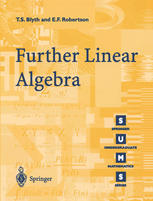

Most ebook files are in PDF format, so you can easily read them using various software such as Foxit Reader or directly on the Google Chrome browser.
Some ebook files are released by publishers in other formats such as .awz, .mobi, .epub, .fb2, etc. You may need to install specific software to read these formats on mobile/PC, such as Calibre.
Please read the tutorial at this link: https://ebookbell.com/faq
We offer FREE conversion to the popular formats you request; however, this may take some time. Therefore, right after payment, please email us, and we will try to provide the service as quickly as possible.
For some exceptional file formats or broken links (if any), please refrain from opening any disputes. Instead, email us first, and we will try to assist within a maximum of 6 hours.
EbookBell Team

4.4
12 reviewsMost of the introductory courses on linear algebra develop the basic theory of finite dimensional vector spaces, and in so doing relate the notion of a linear mapping to that of a matrix. Generally speaking, such courses culminate in the diagonalisation of certain matrices and the application of this process to various situations. Such is the case, for example, in our previous SUMS volume Basic Linear Algebra. The present text is a continuation of that volume, and has the objective of introducing the reader to more advanced properties of vector spaces and linear mappings, and consequently of matrices. For readers who are not familiar with the contents of Basic Linear Algebra we provide an introductory chapter that consists of a compact summary of the prerequisites for the present volume. In order to consolidate the student's understanding we have included a large num ber of illustrative and worked examples, as well as many exercises that are strategi cally placed throughout the text. Solutions to the exercises are also provided. Many applications of linear algebra require careful, and at times rather tedious, calculations by hand. Very often these are subject to error, so the assistance of a com puter is welcome. As far as computation in algebra is concerned, there are several packages available. Here we include, in the spirit of a tutorial, a chapter that gives 1 a brief introduction to the use of MAPLE in dealing with numerical and algebraic problems in linear algebra.